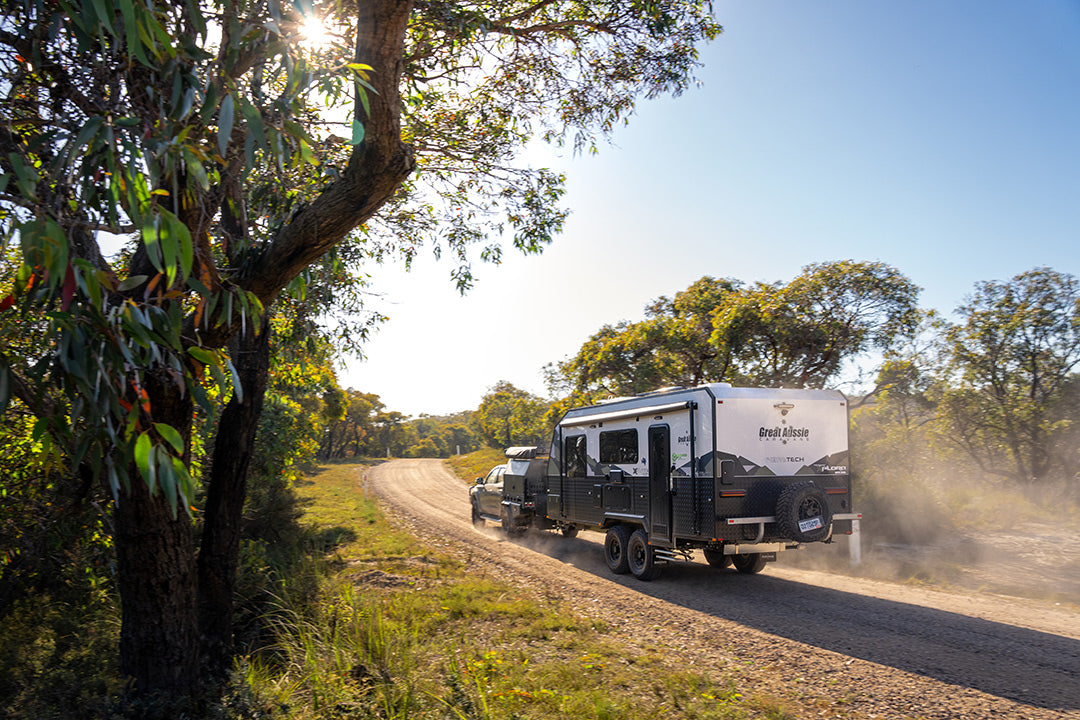Across the middle of Australia: Gary Junction Road NT–WA

The Gary Junction Road is one of Len Beadell’s legendary tracks. Carved through the Great Sandy Desert, it's one of our most scenic and remote drives.
When looking at a map of Australia with a plan for travelling to the west from the east on gazetted roads, there are two familiar treks and two that skirt the more popular waypoints. Of the four, the Nullarbor and the Victoria Highway form part of the loop most folk follow on their big lap. The Great Central Road is a more adventurous drive through Warburton, linking Alice Springs to Uluru and Laverton in Western Australia. The final option covers a nearly direct drive west from the Alice along the Gary Junction Road to the Indian Ocean, somewhere around Port Headland in WA.
For our recent adventure with a group of fellow Trakmaster owners, we liked the look of the remote Gary Junction trek as it had the added bonus of following one of Len Beadell’s iconic ‘highways’ for part of the crossing.
Len Beadell is a star in our firmament of outback legends, and he stamped his authority as a largely self-taught geographer and surveyor in the 1960s with his spare crew of the Gunbarrel Road Construction Party. Saddled with the daunting commission of building roads to service the Woomera Rocket Range, which would be sending rockets from South Australia to the Indian Ocean near WA’s Eighty Mile Beach, Beadell led his team to construct tracks through Australia's arid heart. Many have become destinations for offroad travellers, and they often carry his family's name. His children accompanied him on some of his adventures, and Connie Sue, Gary, Jackie and his wife Anne Beadell are immortalised on our maps.
Our journey began from home in NSW out to Broken Hill and down to Yunta, SA, then along the Oodnadatta Track through the Painted Desert and Marla, and then up to Alice Springs, NT. After a few days of rest, stocking up and checking the vans and vehicles in the Alice, we headed west on the main part of our trek. While the Gary Junction Road made up the primary leg of our trip, the journey between Alice Springs and the WA coast joins a matrix of different roads that have so far avoided a touristy christening. Our journey took us on the scenic Larapinta and Namatjira Drives before linking up with Gary Junction Road near Papunya, NT.
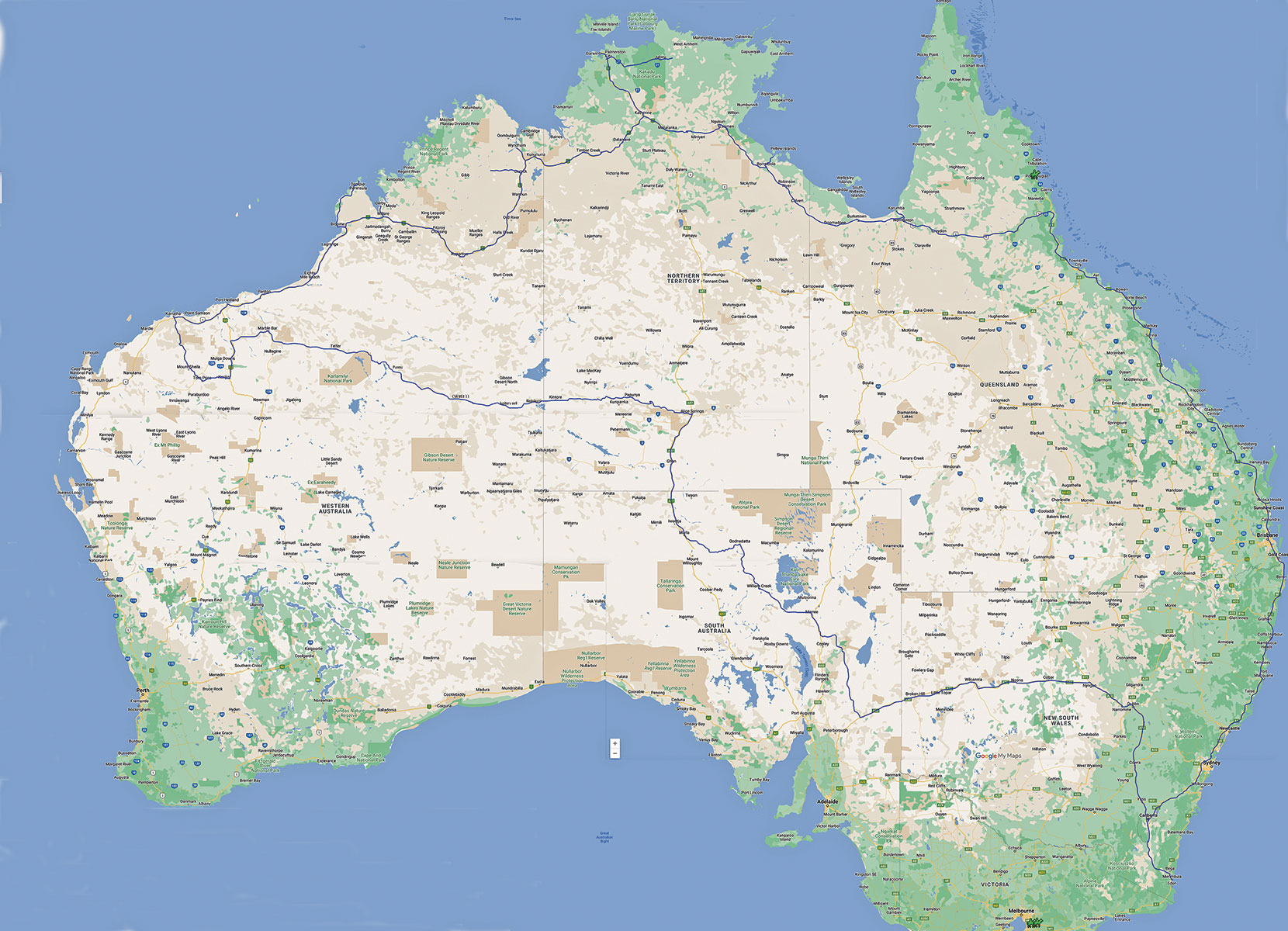
From there, the road carries many names on various maps, including the Kiwirrkurra Road, the Desert Road, the Jenkins Track, Wapet Road, the well-maintained Telfer Road and the tarred boulevard, Rippon Hills Road, into Marble Bar. It’s around 1800km from the Alice to Marble Bar or just over 2000km to the coast.
Because some roads pass through Aboriginal Protected Areas in the Northern Territory, even day trippers need a permit, and they are available from the Central Lands Council. For the road west of the NT/WA border, you pass through the Kiwirrkurra People’s land, and more stringent permit conditions apply. Three-day transit permits are issued automatically online, but longer travel needs special consideration, which can take weeks. Despite what many blogs and travel guides suggest, restrictions apply on where you can camp, and while you can visit stores and art centres, driving through the residential parts of towns ‘for a look’ is a no-no. While the community website welcomes visitors and they are hoping for an extra sanctioned camp, the only permitted campsite currently between the WA border and the Gary Highway is at Jupiter Well.
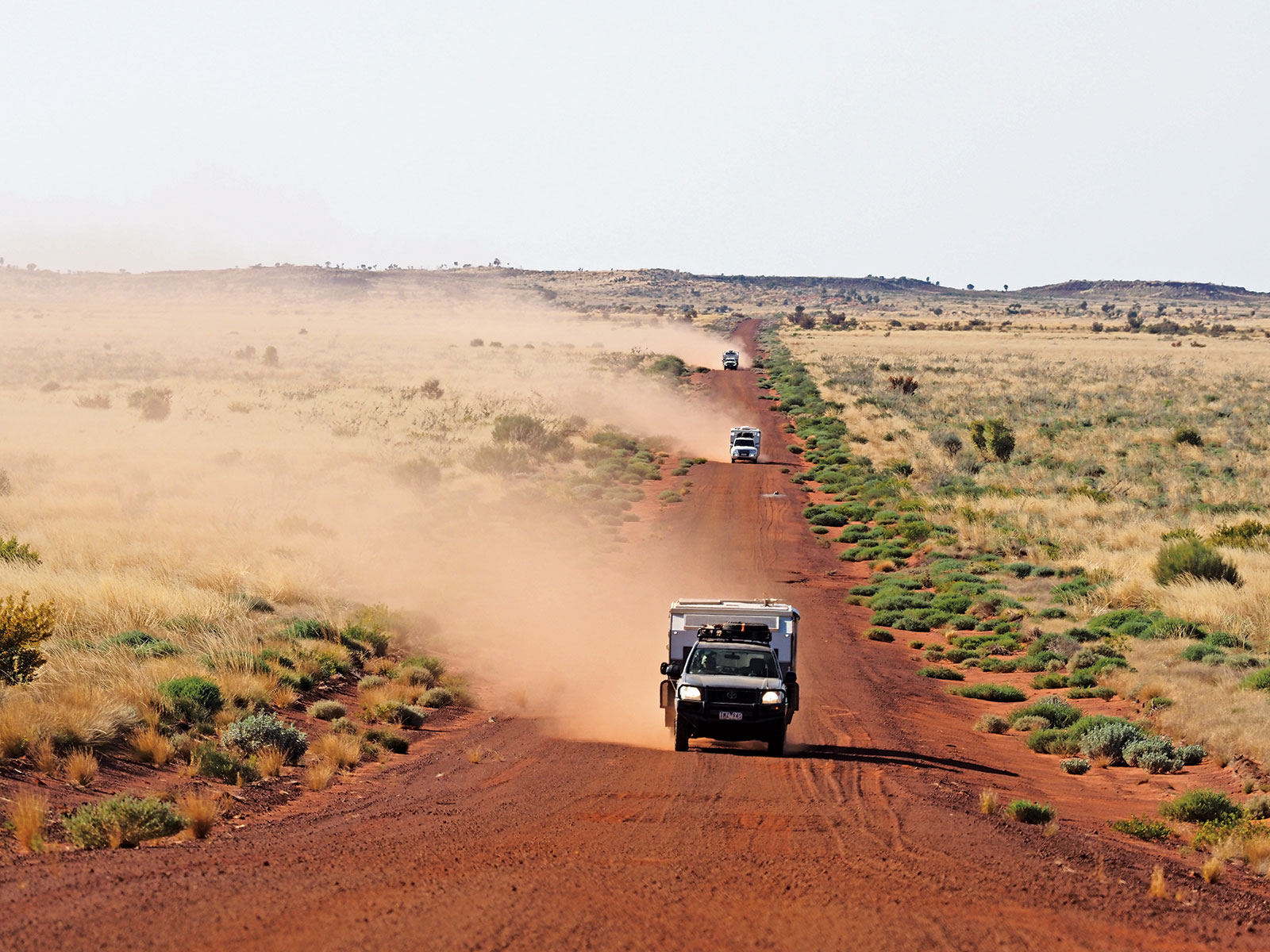
Namatjira Dreaming
We chose the meandering scenic tourist roads for the first part of our trip because we were keen to see the historic precinct at Hermannsburg. The Finke River Mission was established here by the German pastors of the Lutheran church in 1877 as one of the first Christian outposts in Central Australia. The mission operated until 1982 when it reverted to its traditional owners, the Western Arrarnta community. Stillness and silence pervade the surroundings, set among ghost gums that give a natural feeling of place. Many national trust buildings survive and include tea rooms and a gallery dedicated to renowned artist Albert Namatjira, whose watercolour paintings brought the beauty of his homeland into thousands of city dwellers' homes in the 60s.
Tnorala Conservation Reserve
Aboriginal law attributes the Gosses Bluff Crater to a celestial event long ago, but Earnest Giles stumbled across the crater in 1872 and named it after a fellow explorer. Happily, there's an easy drive through a natural opening into the centre. From the interpretive signs, we learned that we missed an 800-metre-wide comet crashing into Earth right where we stood by 142 million years. The impact was a million times more powerful than an atomic bomb and made a crater 22km wide, which has eroded to the 5km ring of near vertical hills that make one of the most beautiful scenes in the NT.
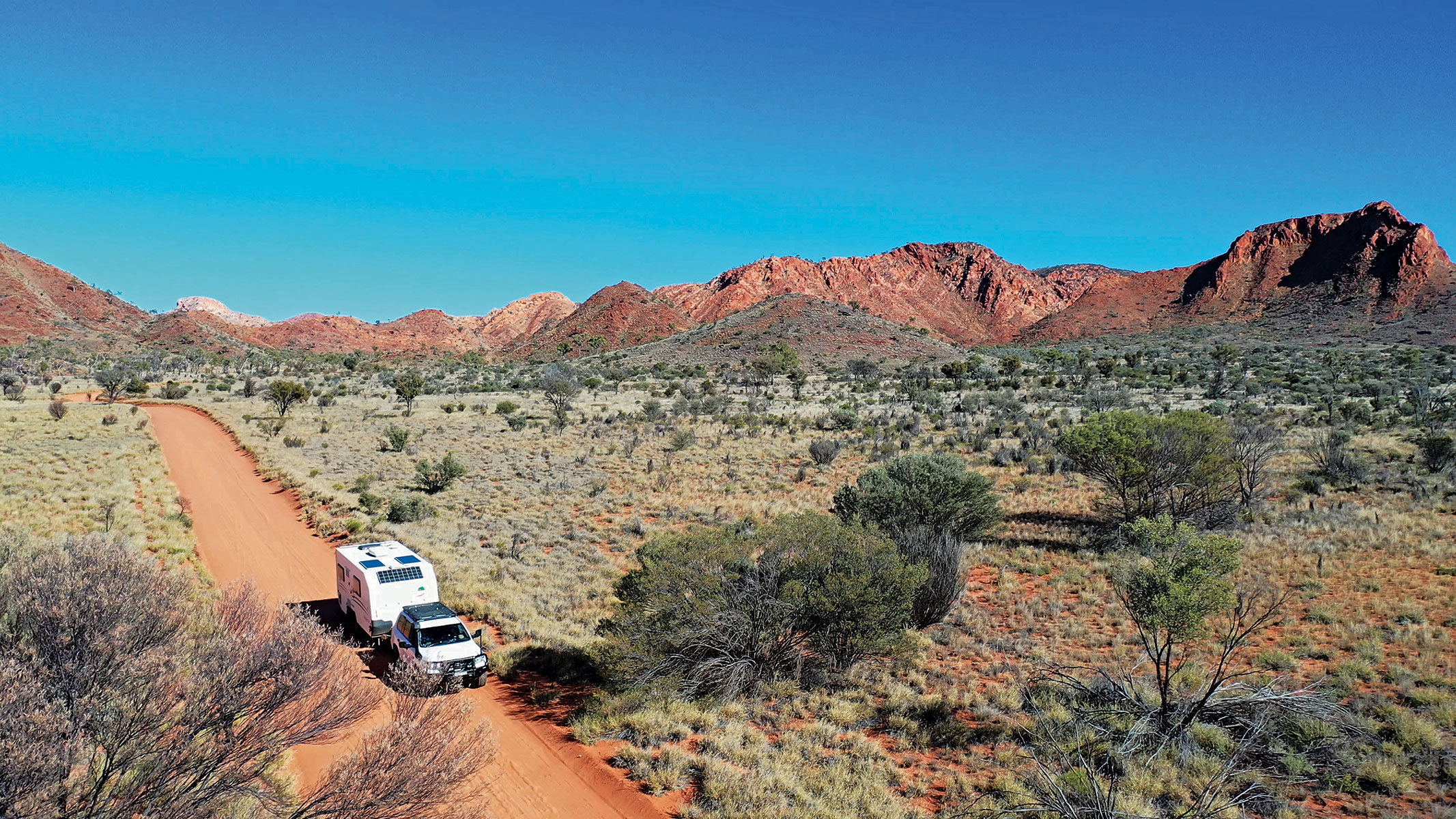
Arrivederci Roma Gorge
When we were setting up camp near Roma Gorge, one of our group started singing the old Dean Martin refrain to Rome, and I couldn't get it out of my mind for a few days. One of the NT’s major art sites, the gorge is a part of the creation line of the Western Aranda people and was a place for ceremonies up to the 1920s. Current custodians continue to teach the stories to the young and welcome everyone to share the site. Petroglyphs or engravings thought to be 10,000 years old occur on rocks in the creek floor and along the gorge's sides. We camped for a couple of nights near the main road on the creek running into the gorge, and we spent most of the day driving along the creek bed to the gorge and exploring the countryside.
Sign of the Cross
The Namatjira-Kintore Link Road took us due west and straight into a vision that was unexpected and somewhat surreal. In 2018, the Haasts Bluff – Ikuntji community completed erecting a massive cross on top of Memory Mountain near their community. Built under the guidance and funding organisation of photographer Ken Duncan, who was asked by the Ikuntji people for help, the 20m high, multimillion-dollar cross progressed over a decade as a sign of the community's Lutheran beliefs and as an aid to tourism.
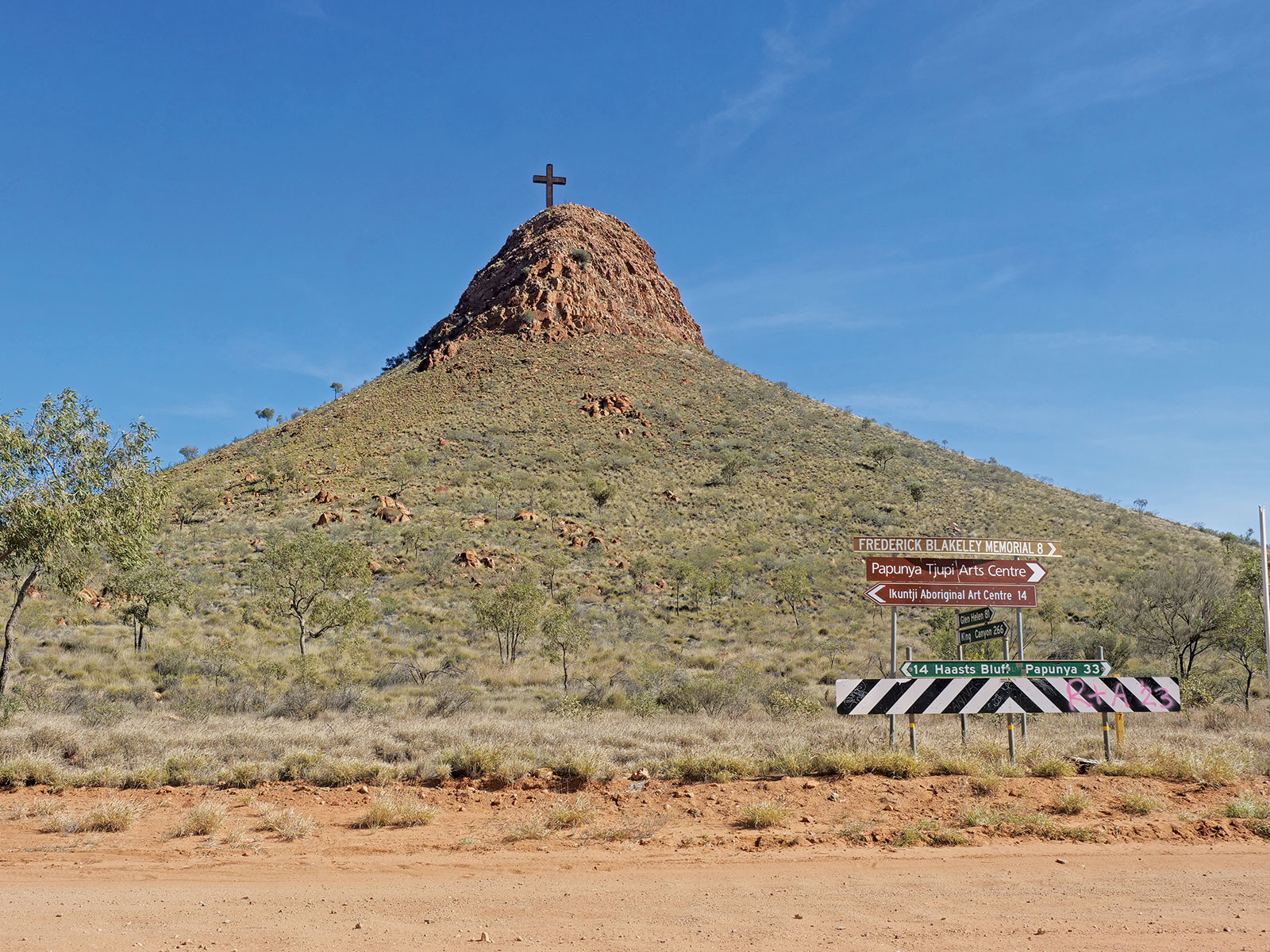
Cradle of Art
Unfortunately, the Papunya Art Centre was closed when we rolled into the community because we were keen to visit what many consider the home of modern Aboriginal Art. It was Sunday, after all, so our planning could have been better. The Papunya Tula Art Movement began in 1971 when a teacher at the community school, Geoffrey Bardon, noticed some men drawing traditional creation stories in the sand. He encouraged them to paint a blank school wall; soon, many were painting on canvas and paper. Portraying creation stories for the public required the removal of sacred symbols and careful monitoring of ancestorial designs. These days, the Papunya Tula group represents men and women and has moved back to the Pintupi homelands and Kintore with a gallery in Alice Springs and an online store at papunyatula.com.au. Local artists are now represented by the Papunya Tjupi Art Group.

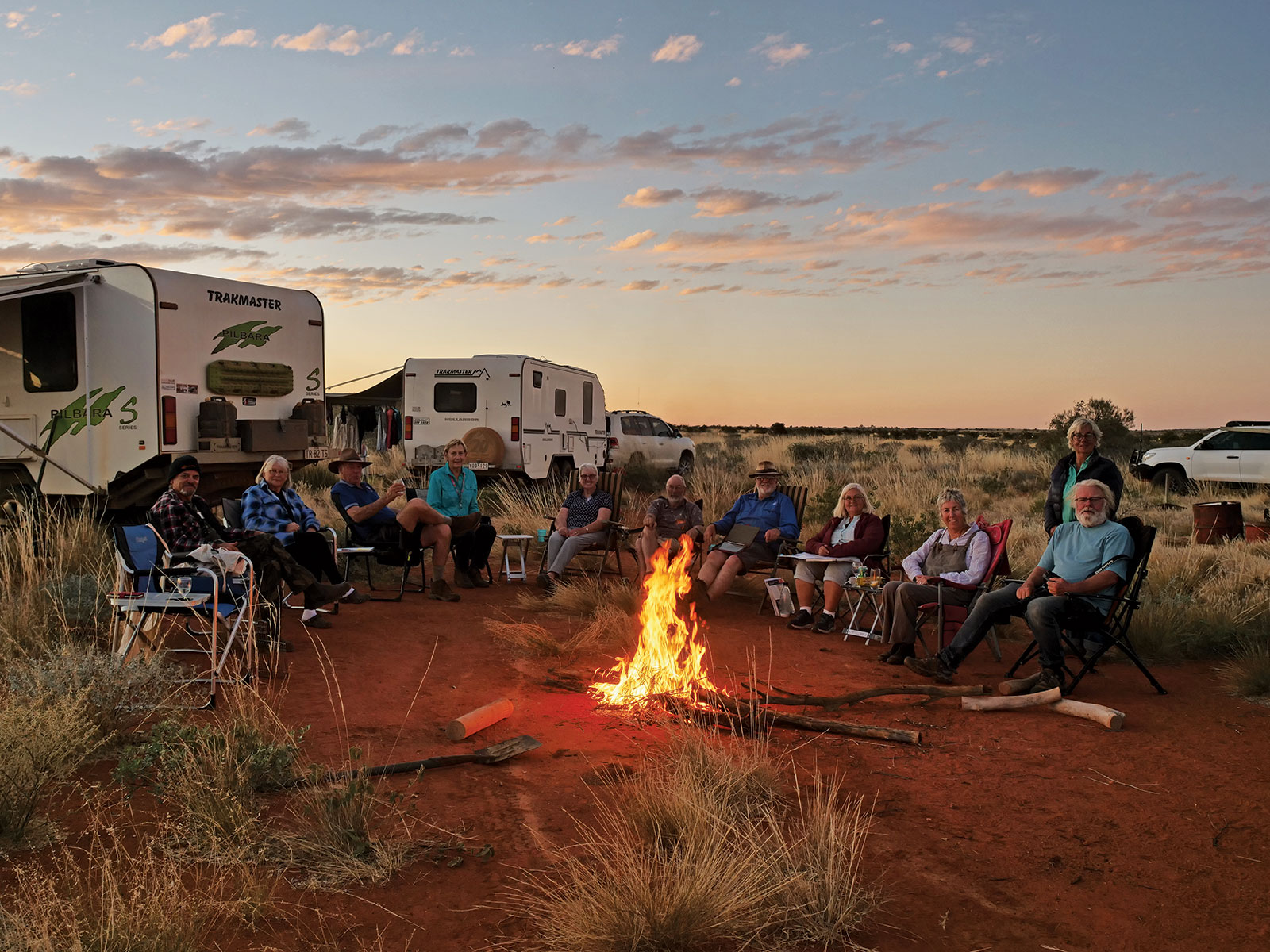
Kintore
The Kintore community is the last stop heading west before the WA border. It's around 6km off the main road, and there's fuel and a well-stocked community store. We filled up with diesel here at the fuel compound even though the next community is 100km west. “Never pass a fuel stop in the outback” is a rule many travellers follow. You never know if the next stop will have fuel, be open, or if they only take cash.
You see Mount Liebig south of the road into Kintore, and legend has it that Len Beadell aligned the road to take the best advantage of the view.
Further west, we camped in a handy quarry near the road just before the WA border and enjoyed a sunset glistening off the faraway mountains to the north.
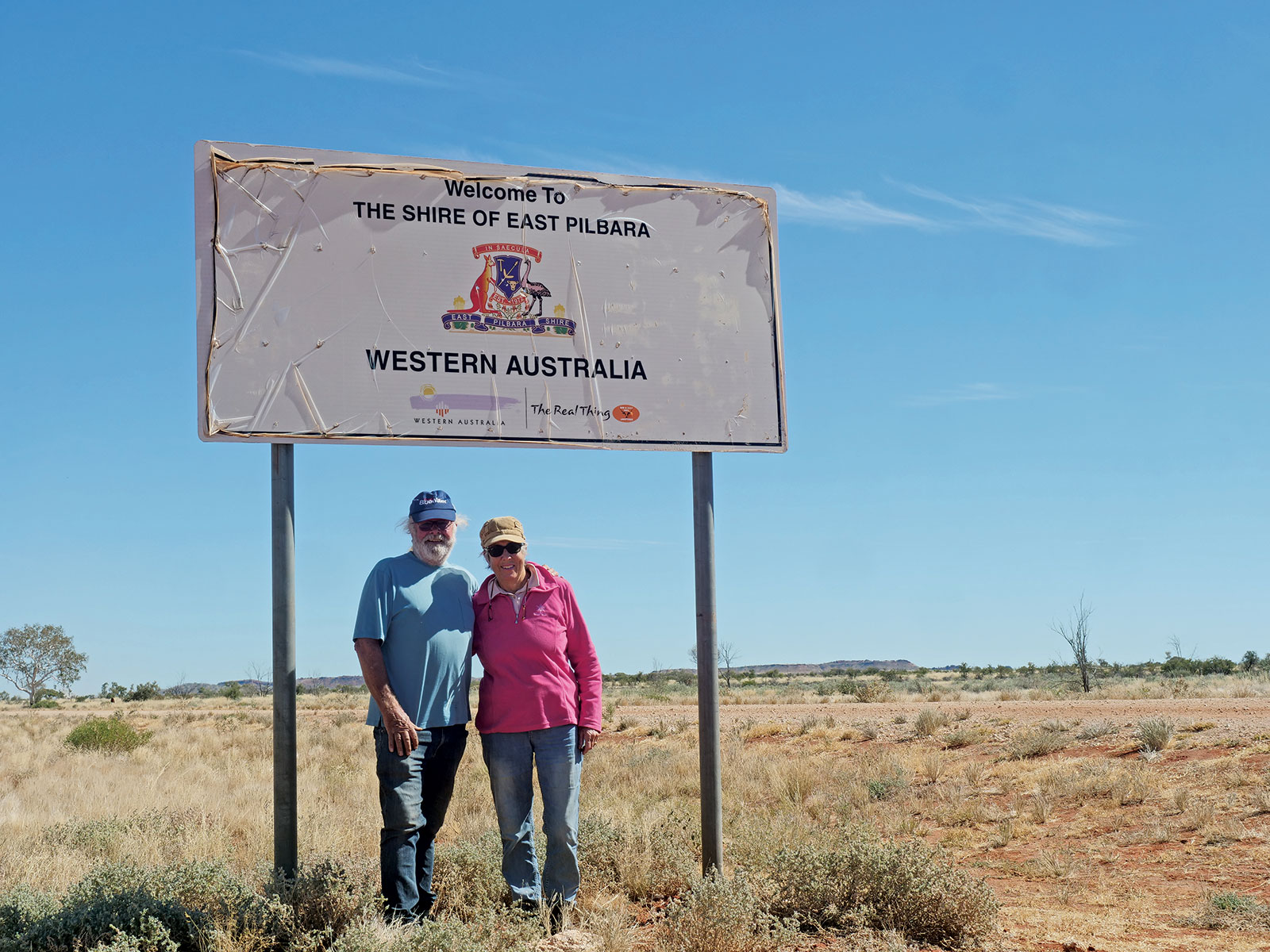
Kiwirrkurra
The road across the whole of WA was surprisingly good. We sat at around 70-80km/h for most of the trip on a well-formed gravel road wide enough in many places for two vehicles. Not that we saw any. For the whole length of the Gary Junction, we saw maybe one other vehicle going east and only passed two trucks near the Telfer Mine. But we saw regular evidence there were other vehicles around. From near Kintore to way past the Canning Stock Route, a broken bag of cement sprawled across the road every 10km or so. A rough calculation meant it had to be a semi-load. Someone was going to be disappointed when they went to unload.
Collectors of significant places will love Kiwirrkurra. They reckon it’s Australia's most remote community, making it a bit special. Set in the sandhill country of the Gibson Desert, it’s home to 180 residents, a friendly store and fuel. A tourist highlight is Len Beadell’s ration truck that burned down miles from anywhere and was towed to its present spot for protection. One of Beadell’s stories has it that when the truck was burning, the water tank started boiling, so Len shot it and filled his teapot for a cuppa.
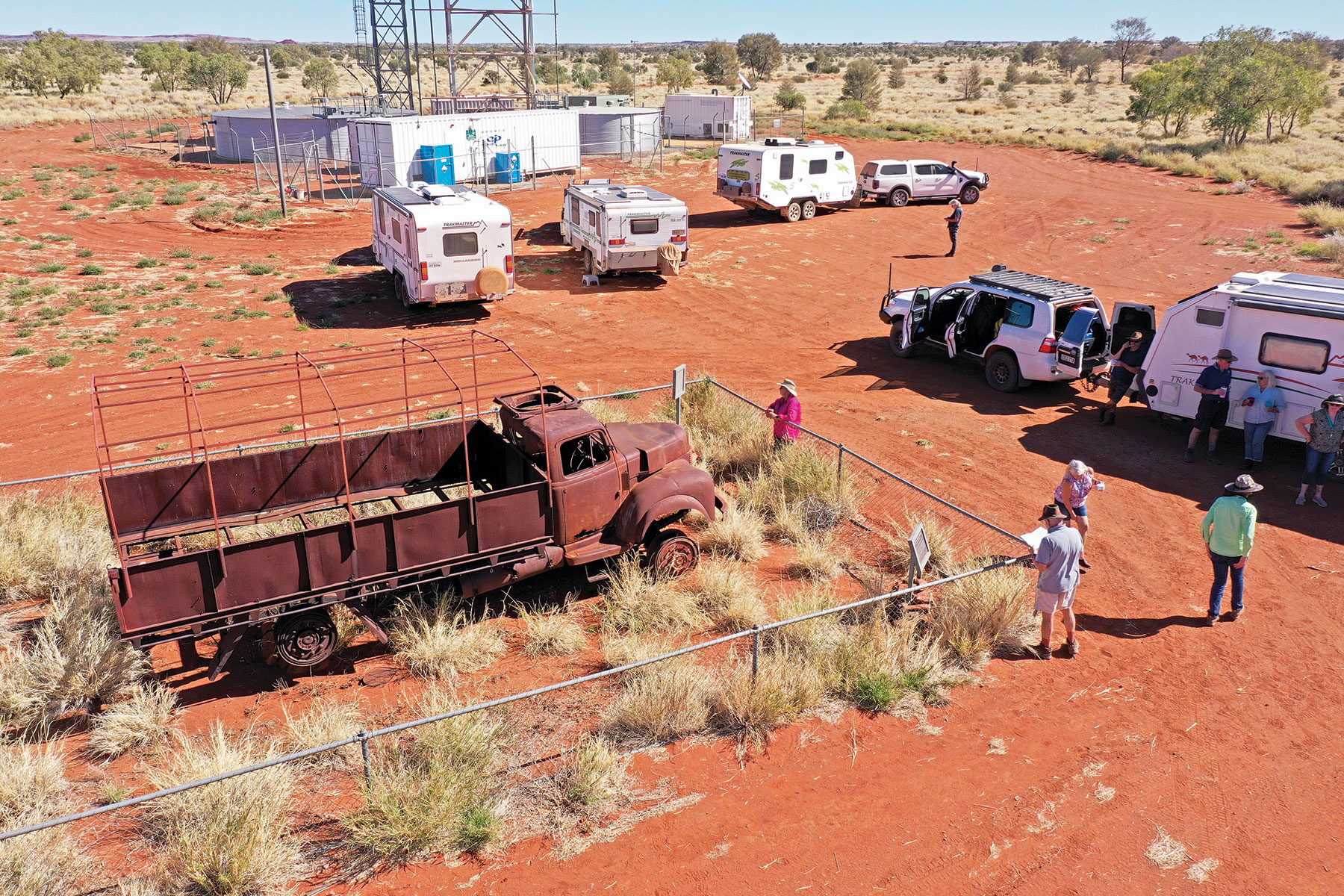
Many of the current elder Kiwirrkurra residents experienced their first contact with Europeans early in their life. There were multiple waves of migration out of the Gibson Desert, but the most recent of which was during the late 1950s and early 1960s. During this time, many Pintupi moved into settlements such as Papunya and Balgo, WA. Some were taken by Native Patrol Officers, while others walked themselves hundreds of kilometres along Len Beadell’s track through country they did not know to follow their family. It wasn't until 1983 that a bore was drilled in Kiwirrkurra, and early the following year residents returned permanently. In 1984, the so-called Pintupi Nine, who had continued to live a nomadic lifestyle, reunited with family at Kiwirrikurra.
Jupiter Well
The scenery for the 100km or so into Jupiter well was lush and beautiful through forests of low desert oaks and hectares of high spinifex. We saw many camels, and it’s said that there are over 300,000 of them in Central Australia, so it's no wonder. The local rangers try to managed them to protect sacred sites and minimise the damage they do to fauna and flora.
The community has set Jupiter Well as the preferred campsite along this WA section of Aboriginal Land. Set in a grove of oaks, there are toilet facilities and a hand pump for decent water. We camped here as the only residents and enjoyed a formal dinner under the stars with appropriate music blasting the night.
A leisurely stroll to the Bar
From Jupiter Well, we drove between high sandhills and increasingly taller trees, and before long, we were at the turnoff to the Gary Highway, which marks the end of the Gary Junction Road on most maps. The original road deviates near here, and it's a smooth drive on the new highway to Kunawarritji, a community on the Canning Stock Route between Wiluna and Halls Creek in WA. There's a store, a motel and 24-hour self-serve fuel. It was the most expensive on our crossing at $3.40 a litre, but it has stayed the same in the eight years since we were here last time. We camped at Well 33, only a short distance from town, where the sunset's golden glow made a memorable backdrop to the windmill turning in the slight breeze.
The white-hot salt at Lake Auld was a natural setting for morning tea on our way to Punmu with its arty and engaging town sign. Punmu is a beautiful community set on the vast glistening salt of Lake Dora. Another sign on the main road tells travellers that Punmu is open, and they welcome visitors to the store and Martu community gallery. A dedicated tourist area with camping and caravan sites is close to town.
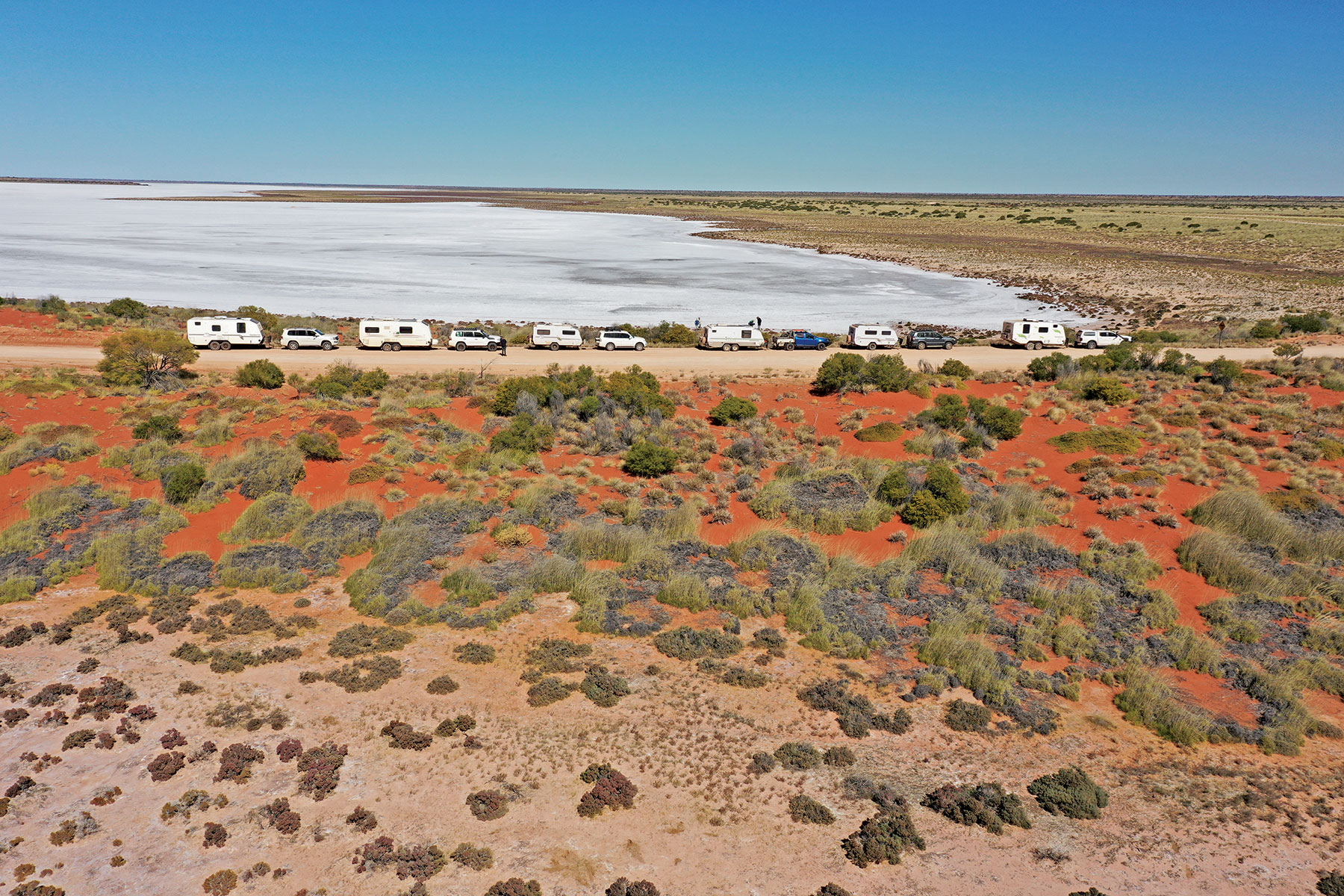
Not that the road conditions that we had experienced all the way from Alice Springs could be called bad, but they improved tenfold when we hit the Telfer Road to the south of the monster Telfer gold, silver and copper mine on the horizon to the north. We were all very surprised to see a man pulling a small trailer jogging towards us. In the middle of a sun drenched plain we had encountered Guy Schweitzer 300km into a walk to his home in Brisbane from Port Hedland, WA. His epic journey made our travels seem insignificant and we later heard he arrived after travelling for 78 days, making him the 29th person to make it coast to coast on foot.
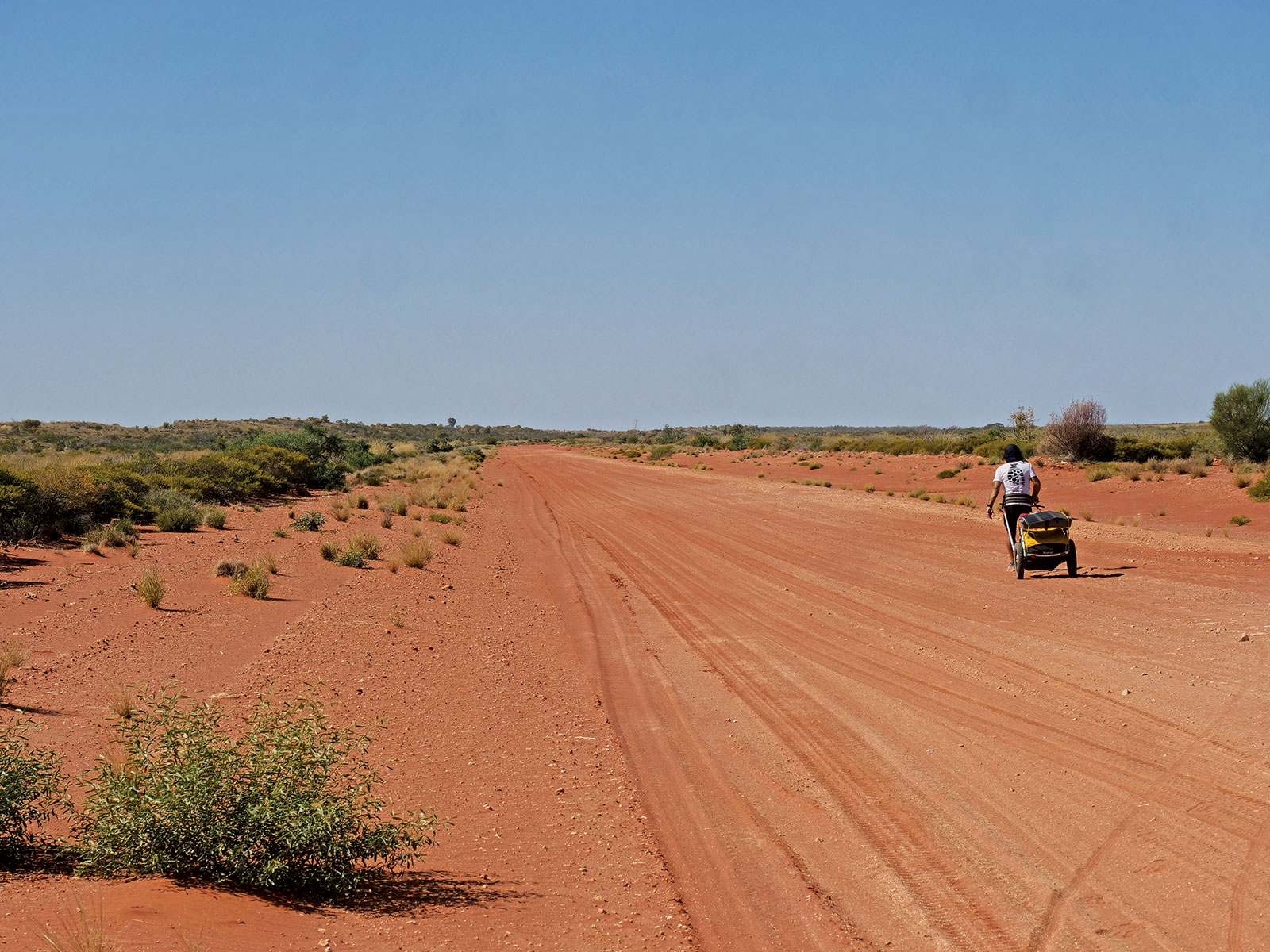
Before we hit Marble Bar's bright lights, we took the Woody Woody Road through Warrawagine Station, where the owner’s welcome visitors to Carawine Gorge, a beautiful and serene campsite on the Oakover River. We stayed for two nights, but you could settle here much longer. The area is a 4WD dream with rugged tracks to the upper gorge and the natural spring at Running Waters, a couple of hours away.
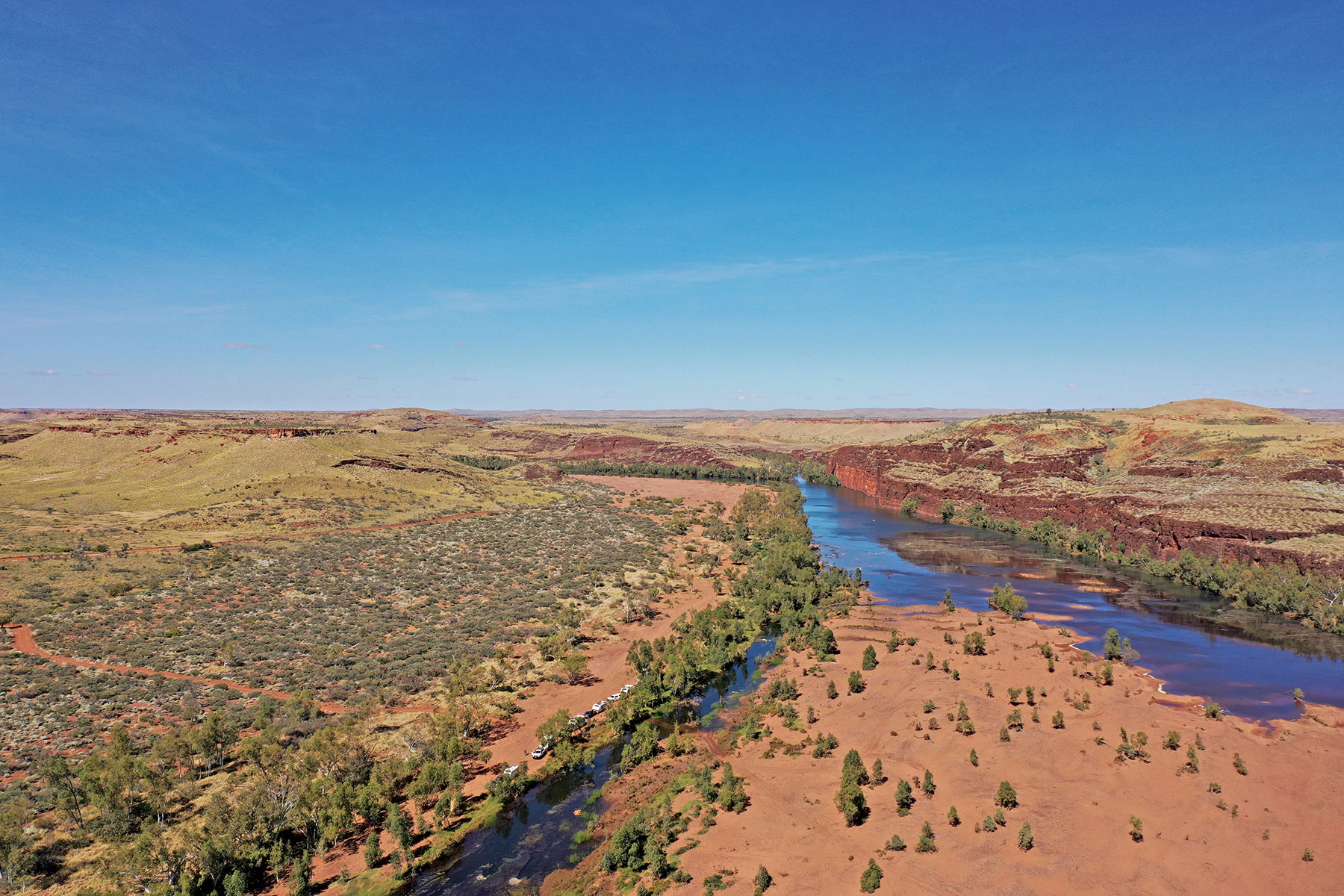
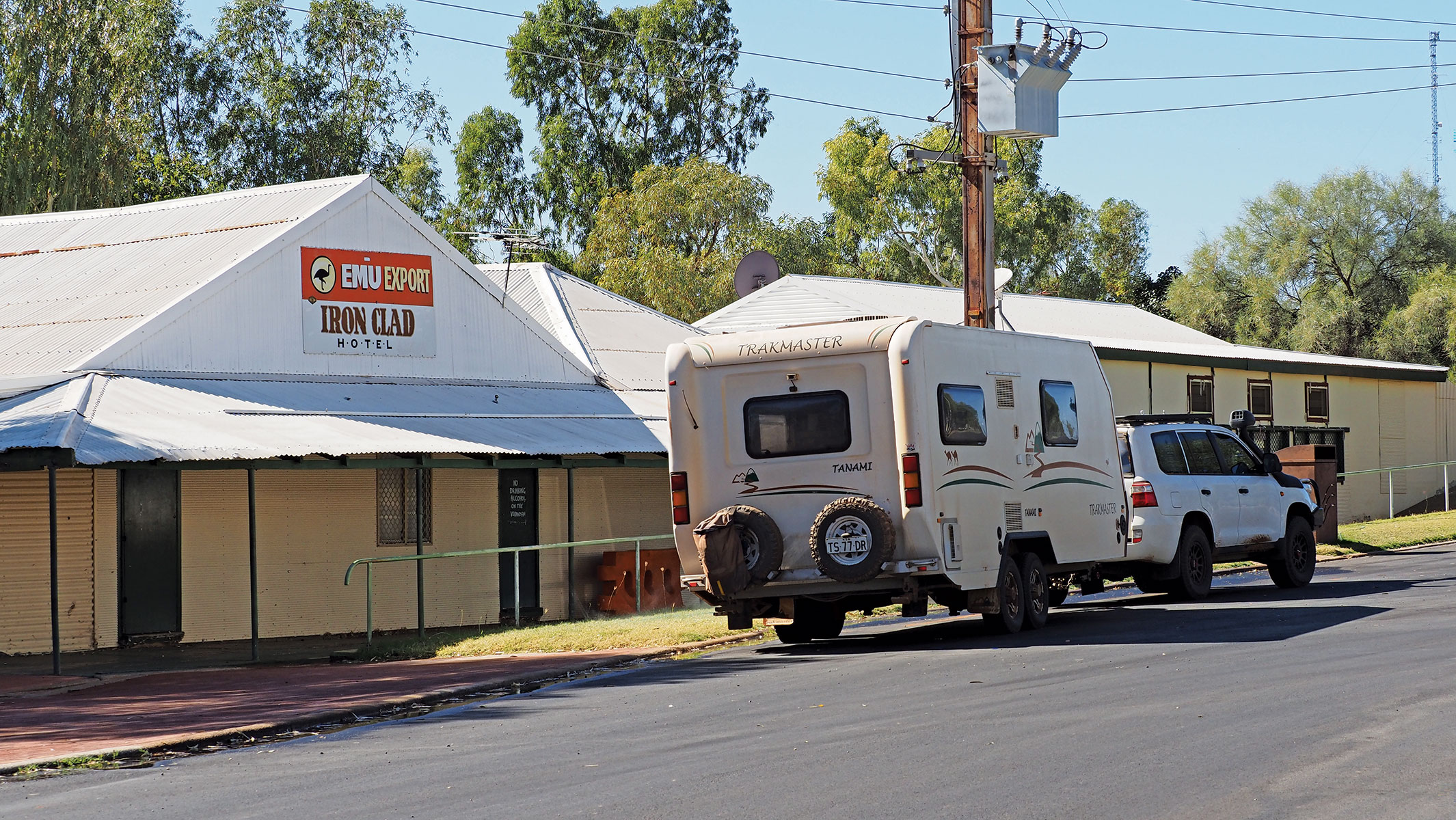
The drive into Marble Bar on the wide sealed road was a breeze, and there was a supermarket and a pub to welcome us back to town life. We didn't stay long. Our mission was a quick trip to Tom Price and Karijini and a final run to the coast at Karratha via the Hamersley rail corridor. But if you are keen on a swim in the ocean, Port Hedland is only 200km to the west.
Our trip home took us north along the WA coast and back through the NT, but Len's spirit followed us. When we camped at Anna Plains Station on Eighty Mile Beach, there was a substantial airstrip for the Talgarno Military base, now long gone, that serviced the rocket range, the furthest of the Woomera outposts.
So, that's the Gary Junction Road or at least the modern take on Len's push to the coast. It's an epic drive and a scenic, historic shortcut through communities where English isn't the first language. The landscapes of the desert surprise with the diversity of scenery and vegetation, and there's never a dull moment. It's a remote and desolate place, and if you run into trouble, you need to be independent with fuel and water to sustain the journey.
Need to know
Approximate distance between fuel stops:
- Alice Springs to Papunya 380km
- Papunya to Kintore 270km
- Kintore to Kiwirrkurra 185km
- Kiwirrkurra to Kunawarritji 371km
- Kunawarritji to Punmu 190km
- Punmu to Marble Bar 400km
THE NEXT STEP
If you need help choosing your first caravan or are considering upgrading your existing one, check out the caravans available on TradeRVs today.
The sellers will be happy to help and answer any inquiries you may have about the products advertised for sale.






